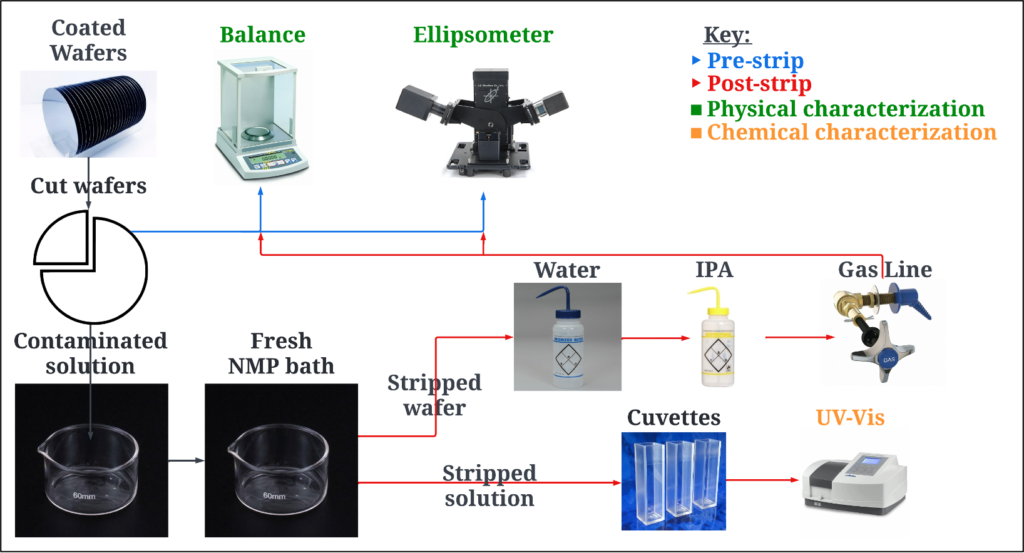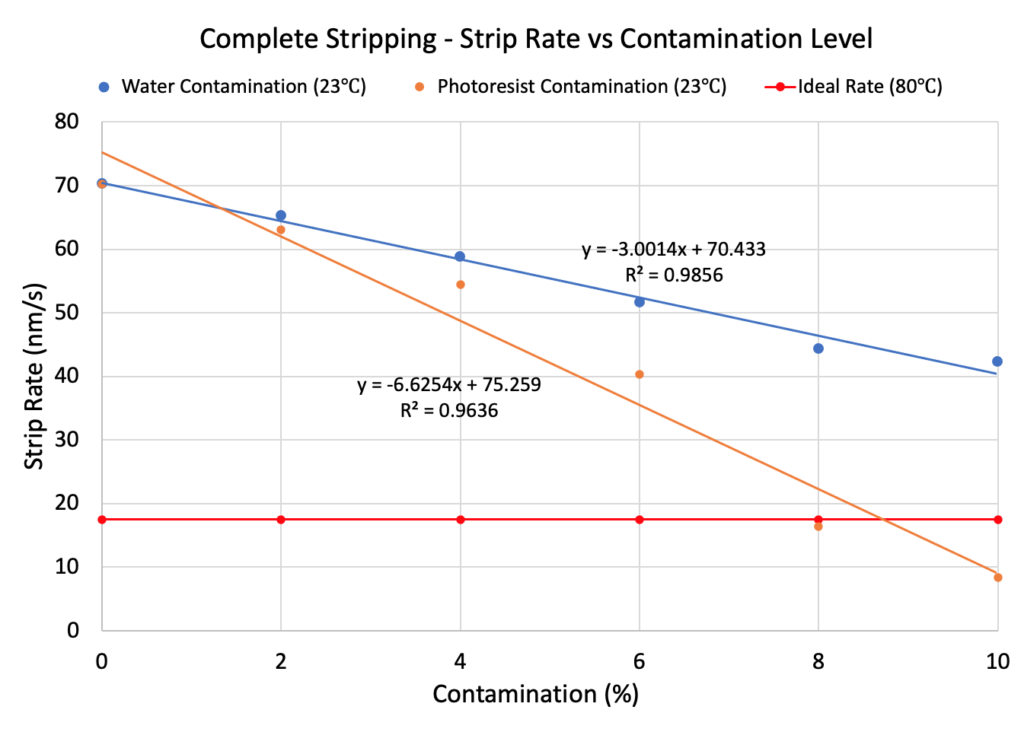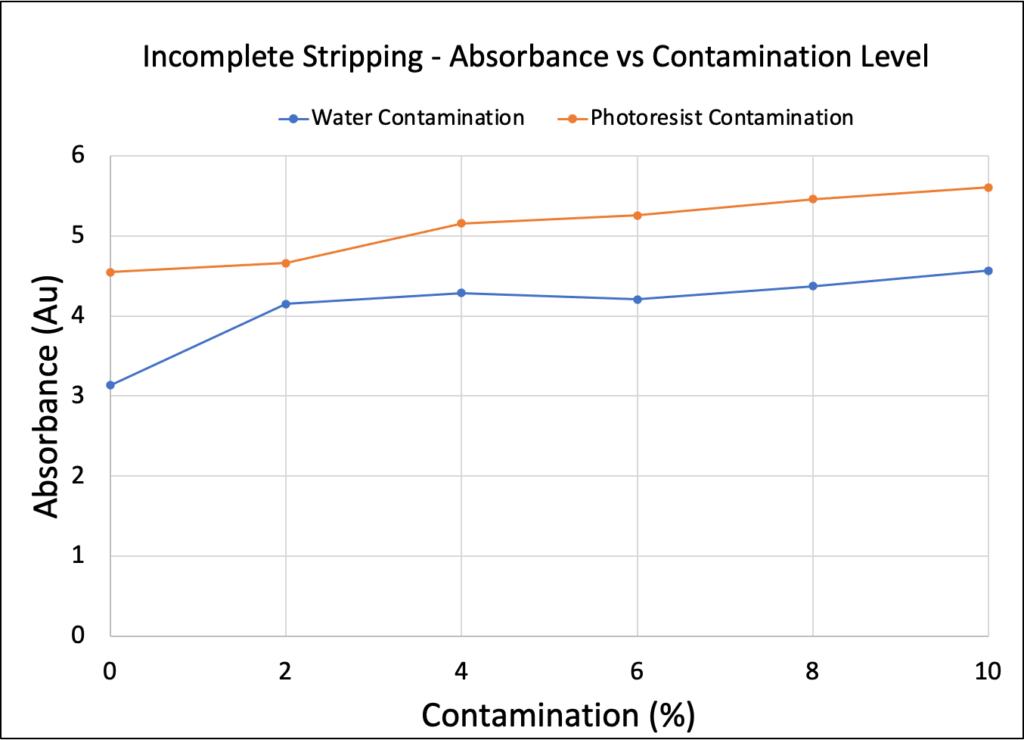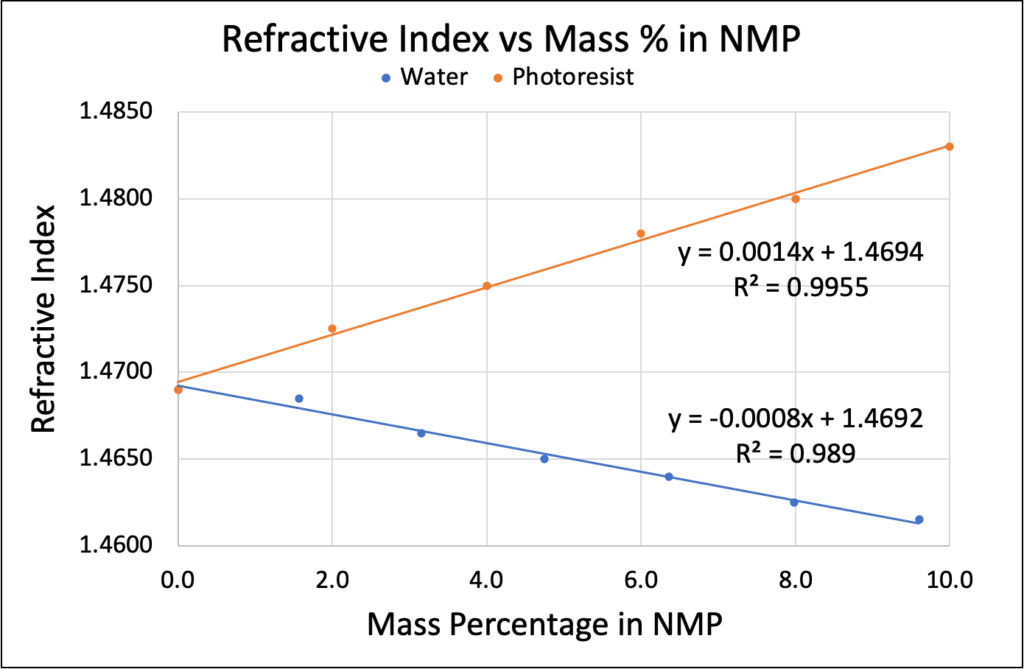Team
- Kudzai Mbinda
- Joseph Frye
- Brittany Pitt
- Akram Ismail
Mentor
Alexander A. Shestopalov, Assistant Professor of Chemical Engineering, University of Rochester
Sponsor
Michaela Wentz, Process Development Engineer, Meta Reality Labs (Cork, Ireland)
Abstract
N-methyl-2-pyrrolidone (NMP) solvent is used to strip photoresist residues from coated silicon wafers in the post-etch stages of µLED Manufacture by Meta Reality Labs. The relation between NMP stripping rate and the concentrations of water and photoresistor are studied. It is concluded that the effect of concentration on stripping rate can be fit to mathematical models. Additionally, the concentration models using refractive index and UV-Vis spectroscopy are developed.
Introduction



Augmented Reality/Virtual Reality Devices:
Augmented reality (AR) is the practice of superimposing computer-generated graphics onto real images and/or footage. Virtual reality (VR) is the practice of spatially simulating 3-d computer generated graphics. AR and VR simulation is typically done with the use of headsets which have displays projecting onto the users’ field of vision. AR/VR has applications in medicine, education, and entertainment.
An important parameter in the design of AR/VR headsets is the image resolution of the headset’s display measured in pixels. Meta Reality labs uses µLED arrays in the manufacture of certain headset products. µLED’s are diodes derived from semiconductor materials, and they are manufactured using photolithography.
Photolithography and Stripping:

Photolithography is a multistep process that ultimately shapes semiconductor chips. This process is also used to shape µLED’s. The process is typically done using light to etch specific regions of the wafer. Photoresist is a chemical used in the etching process. All photoresist must be removed in the post-etch stage of the process. The photoresist is typically dissolved using organic solvents such as acetone, NMP, and THF. The stripping rate (photoresist dissolution rate) is related to the amount of contaminants present.
Project Objectives
- Determine how NMP stripping performance degrades as a function of water content.
- Determine how NMP stripping performance degrades as a function of dissolved photoresist.
- Devise a method for the Meta Reality Labs plant to monitor NMP degradation over time.
Experimental Setup





Results and Discussions

• Expected contamination levels are 0.64% by mass for photoresist annually and 1% by volume for water from ambient moisture.
• At these contamination levels, the desired stripping performance is exceeded.
• Independently, photoresist contamination has a slightly greater impact on the stripping rate of NMP. •The target stripping rate of 17.5 nm/s at 80℃ is exceeded at the expected contamination levels at ~ 23 ℃.

• Wafers were partially stripped for 10 seconds in different solutions and the stripping was completed using pure NMP.
• As both contamination levels increased, the amount of photoresist remaining on the wafers after 10 seconds of stripping increased as shown by increasing absorbances of the solutions.
• Validates the trend shown with the increasing time it takes complete stripping to occur as the contamination level increases

• As expected, the refractive index of NMP decreases with increased water concentration.
• Also, the refractive index of NMP increases with photoresist concentration.
• The models are statistically significant and can be used to predict concentration given refractive index.
Conclusions
- The stripping rate of NMP decreases with increased contamination of both NMP and water.
- Stripping rate can be quantified using:
- The time required for a wafer to completely strip.
- The mass remaining on a wafer after stripping for 10 seconds.
- Stripping rate is high at room temperature, consequently the NMP bath does not need to be heated to 80°C.
- Refractive index of NMP/water decreases as the contamination level increases, the inverse is true for NMP/photoresist, and can consequently be used as an in-line method to monitor contamination levels.
Future Work
- Repeat study using room equipped with only yellow light to reduce possibility of white/natural light exposure.
- Quantitively determine how the joint interaction of water and photoresist alter stripping rates.
- Explore the effects of other contaminations, such as trace metals and natural light.
- Explore the effect of operating conditions, such as pressure and temperature.
- Determine what compounds are formed that reduce the effectiveness of stripping and propose a degradation pathway for NMP.
Acknowledgements
We would like to thank and acknowledge:
- Our sponsor Michaela Wentz and the staff of Meta Reality Labs.
- Our professor, instructors and advisors Dr. Lawton, Dr. Shestopalov, Dr. Kelley, Dr. Yates, Professor Juba, Clair Cunningham , Mason Garlatti , Dr. Tenhaeff, Dr. Mack, Dr. Madejski, Jeffery Lefler.
- The graduate students who assisted us: Jorge Medina Andrade, Nan Liu, Ben Carlson, Xiao Li, Ni Huo, Zhengfu Huang.
References
- John C. Moore. Proc. SPIE 4690, Advances in Resist Technology and Processing XIX, (2002).
- Hugger, Alexander, et al. IEEE Transactions on Semiconductor Manufacturing 33.4 (2020): 552-556.
- Le, Q. T., et al. Microelectronic engineering 86.2 (2009): 181-185.
- Lennon, Gavin, et al. Journal of analytical methods in chemistry (2020).
- Spuller, M. T., et al. Journal of the Electrochemical Society 152.1 (2004): G40.
